The Blue Sulphur Springs Pavilion was restored to its former glory through a long decade of hard work.
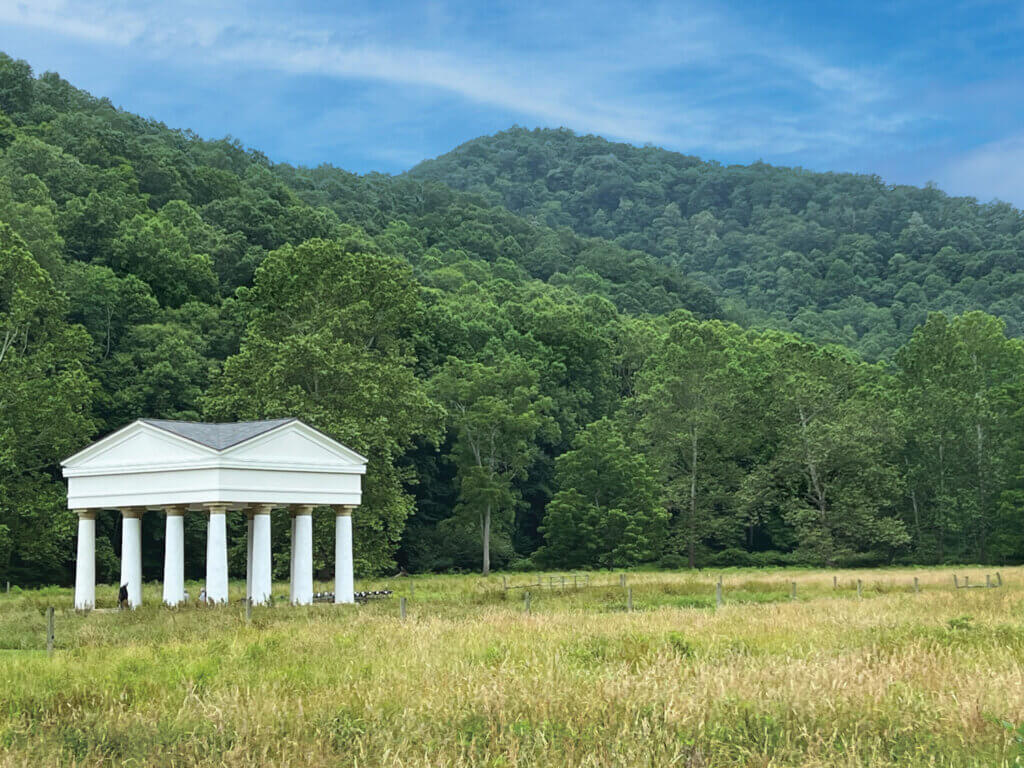
WRITTEN BY LAURA JACKSON
PHOTOGRAPHED BY NIKKI BOWMAN MILLS
Many sulphur springs bubble up from beneath the West Virginia ground. The best known of these is White Sulphur Springs in Greenbrier County. However, visitors, history seekers, and road trippers will find other sulphur springs in the region, as well as across the Virginia border. Some of these include Red Sulphur Springs, Salt Sulphur Springs, and Blue Sulphur Springs, each with its own story to tell.
Blue Sulphur Springs in particular was once known for its healing waters. Today, it’s the site of a historical restoration project that has been decades in the making.
In the Beginning
“In the 1800s, people did not have the grasp of medicine they have today,” says Margaret Hambrick, of the Greenbrier Historical Society’s Friends of the Blue Committee. “They thought that sulphur springs would cure just about everything. People from all over the country came to the springs during the summer season. They would travel from as far away as New Orleans by riverboat and stagecoach.”
Before Europeans arrived, animals would have known the location of this sulphur spring, and this probably led Native Americans to the site as well. William Patterson was likely the first white settler to discover the spring, when he was chased into a thornbush by a protective mother bison drinking with her calf in the late 1700s. The Commonwealth of Virginia granted him 490 acres, including the spring, in 1789.
Over the following 150 years, the property would change hands many times. The Blue Sulphur Springs Resort was built in the 1830s by both free workers and enslaved people and quickly became a vacation destination. “Lots of people came to visit the springs,” Hambrick says. “They would make the rounds, starting at one spring and on to the next one and so on. Blue Sulphur didn’t have any particular medical claim, but Red Sulphur was believed to cure tuberculosis. Salt Sulphur Springs was known as a marriage market—planters from South Carolina and Georgia would come up with their marriageable sons and daughters. The springs were definitely social centers.” Politicians seeking respite from the summer humidity of Washington, D.C., visited, too, including President William McKinley and members of his cabinet.
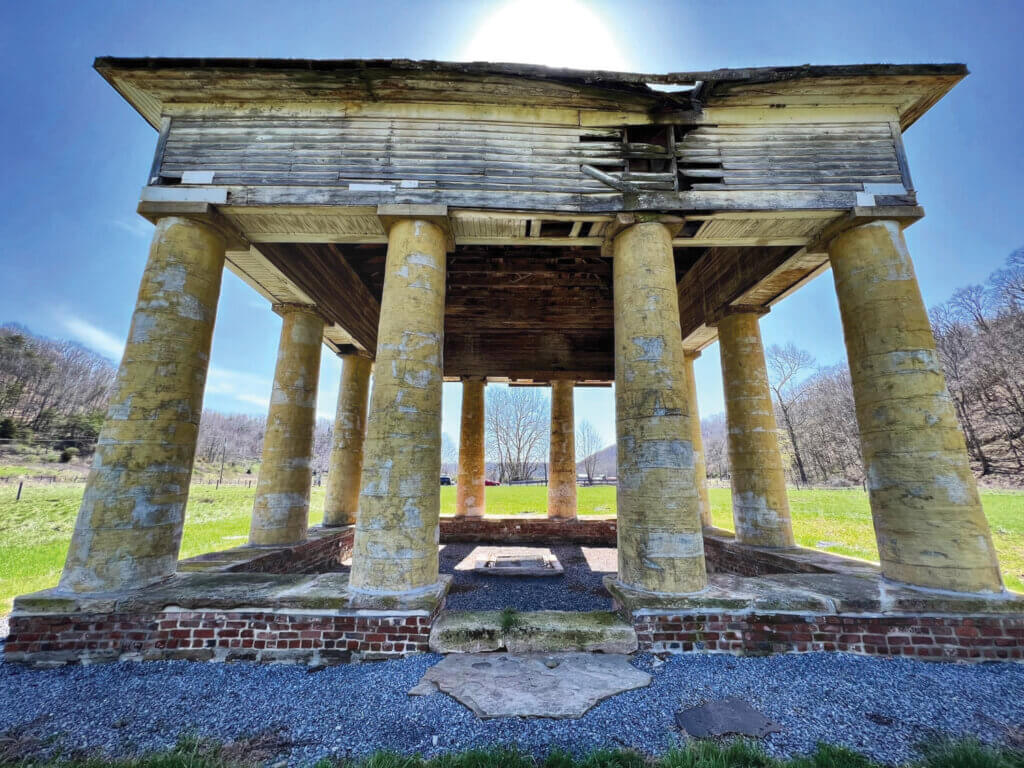
Within a decade, the new resort met financial difficulties and was sold several times. In 1860, the property became the site of Allegheny College, but shortly thereafter, the Civil War broke out. According to Hambrick, “Most of the students were from the South, and they had to go home. Throughout the Civil War, it was a stopping place for both sides. They both used it as a hospital from time to time. There were wonderful buildings and a good source of water. But the Union got tired of the Confederates using it, so they burned everything.” Everything except the Blue Sulphur Springs pavilion.
Restoring History
Today, only that pavilion remains. The Greek Revival–style, columned structure was built around the spring itself, which flows up through a well in the floor. Once grand, by the time it was donated to the Greenbrier Historical Society by Mrs. Rebecca Fleshman Lineberry in 2013, the pavilion was falling apart. With the help of the West Virginia Department of Arts, Culture and History, private sources, and a Kickstarter campaign, the restoration began. Visitors and restorationists had to wear boots to traverse the soggy ground because, over the years, the spring began coming up in other places.
Overseen by Mills Group, an architecture and preservation firm headquartered in Morgantown, the restoration took a decade, and Friends of the Blue say every part of the pavilion was touched, including a complete rebuild of the roof. An archaeologist supervised any ground disturbance.
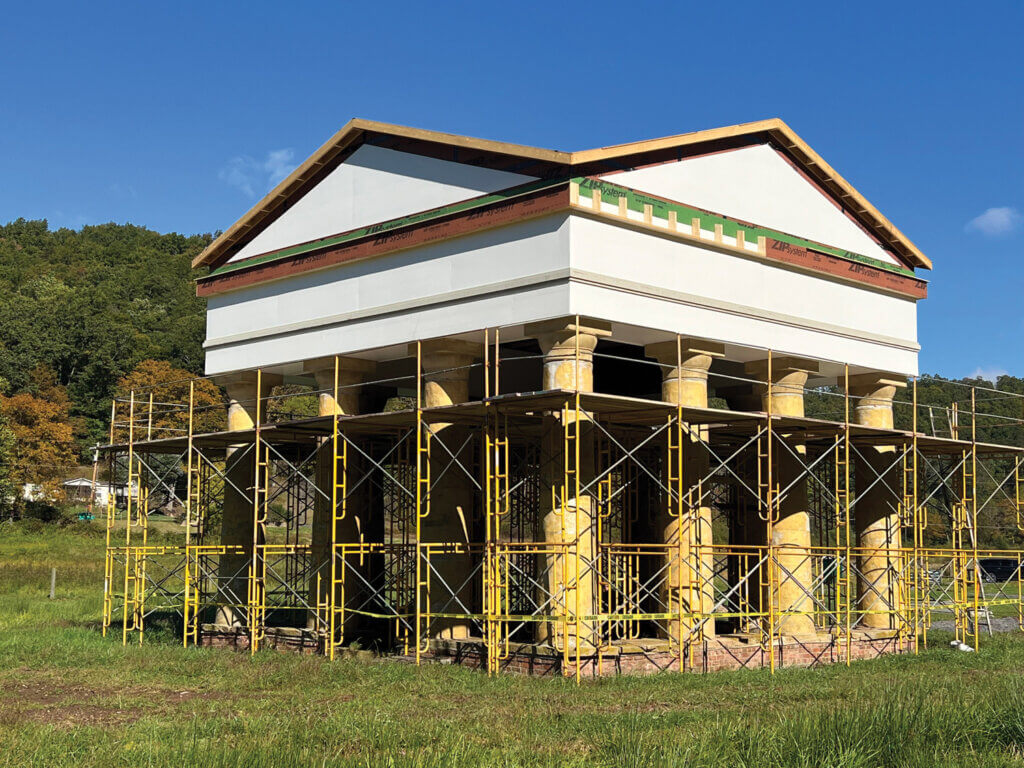
“As with almost any restoration, you start at the bottom and go up,” Hambrick says. “We worked on the drain, and then we stripped all the old stucco off the columns. They are solid brick, through and through. They didn’t have rebar back then. So, we had those stripped down, we documented them, and then they were wrapped in earthquake fabric to make them stronger.”
Working on the foundation was the most “hair-raising part,” she says. Unlike bricks today that are commercially fired, the bricks in the pavilion’s foundation were wood-fired out of local sand and mud. This meant they held more water, were more likely to crumble, and required extra care. “We would put jacks under a column and take out all the bricks underneath, saving the ones that were intact. Then, we would put rebar, cinder block, and metal I-beams under there and fill it in with concrete. We did that column by column around the edge of the pavilion without one of them falling over. It was scary, but taking them down and rebuilding them would have destroyed the historical integrity.”
The group still has to improve the drainage around the pavilion. Once the ground has dried out, they’ll install interpretive signage. Until recently, the site was closed for safety during restoration, but the pedestrian gate is now open, which has allowed visitors to see and understand the process. During the excavation and underground work, the public didn’t have a clear picture of what was going on, and some worried the roof might fall during column work. “Finally, when the roof started going on, they were so excited,” Hambrick says.
Standing Tall
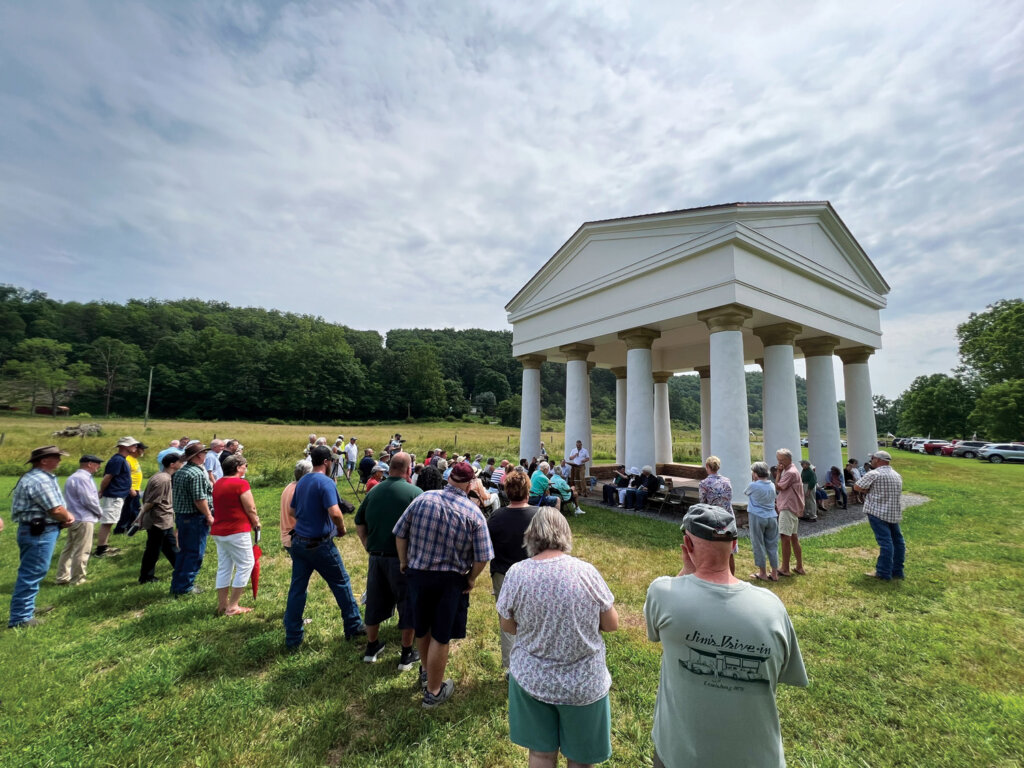
The Blue is now open to the public and available for events like family reunions, weddings, and photography shoots. However, apart from electricity, there are no amenities such as toilets, picnic tables, or storage space. Everything must be brought in and taken out.
Hambrick, who serves as board liaison for Friends of the Blue, is grateful for the group’s efforts and devotion to the project. “We actually had the same people working together from 2013 through 2023,” she says. “Having that group was really special. Nobody gave up.”
Although the work isn’t quite finished, many visitors come simply to see the unique structure, which stands out from the bucolic scenery of Greenbrier County. “If you drive by, it’s out in the middle of farmland,” Hambrick says. “It’s amazing to come around the corner and see a Greek pavilion out in the field.”
Visit greenbrierhistorical.org to learn more or make a donation to ongoing restoration efforts.
READ MORE ARTICLES FROM WV LIVING’S SPRING 2024 ISSUE

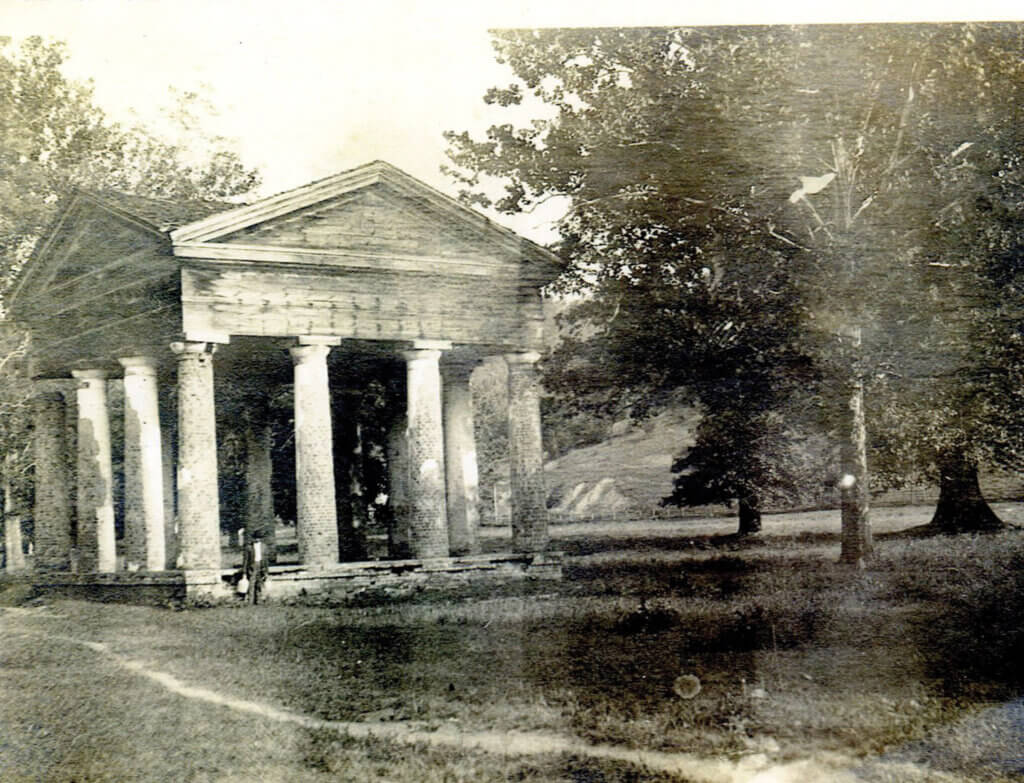










Leave a Reply